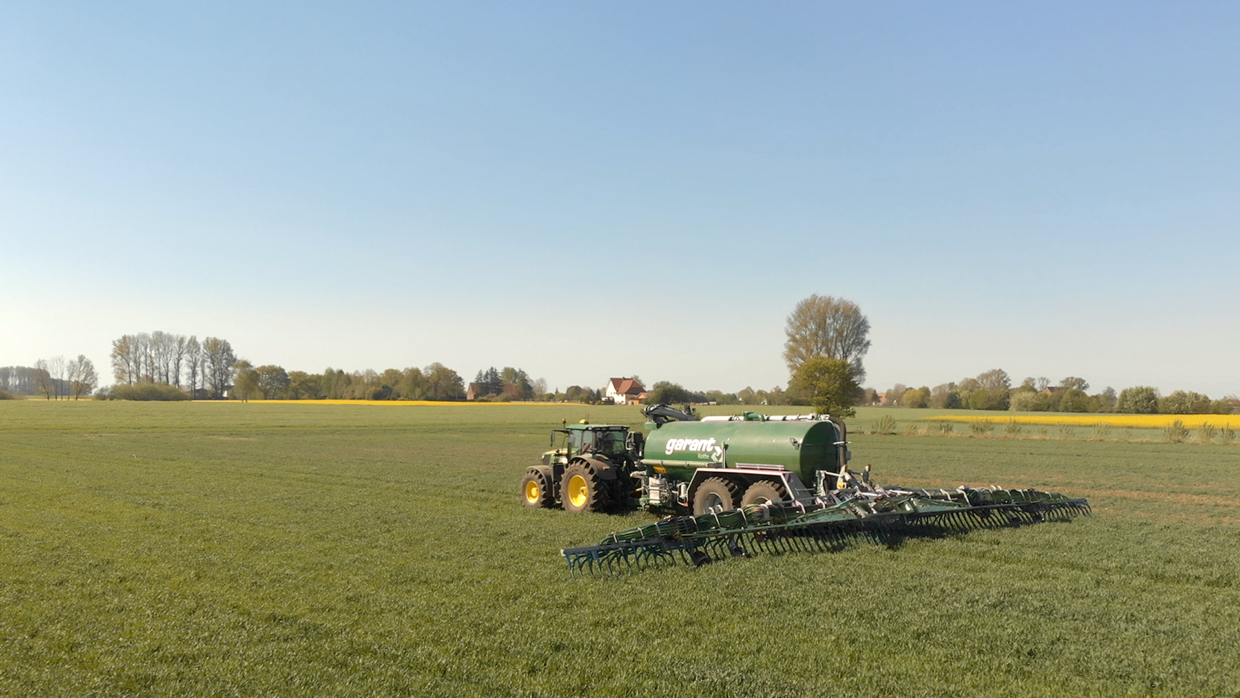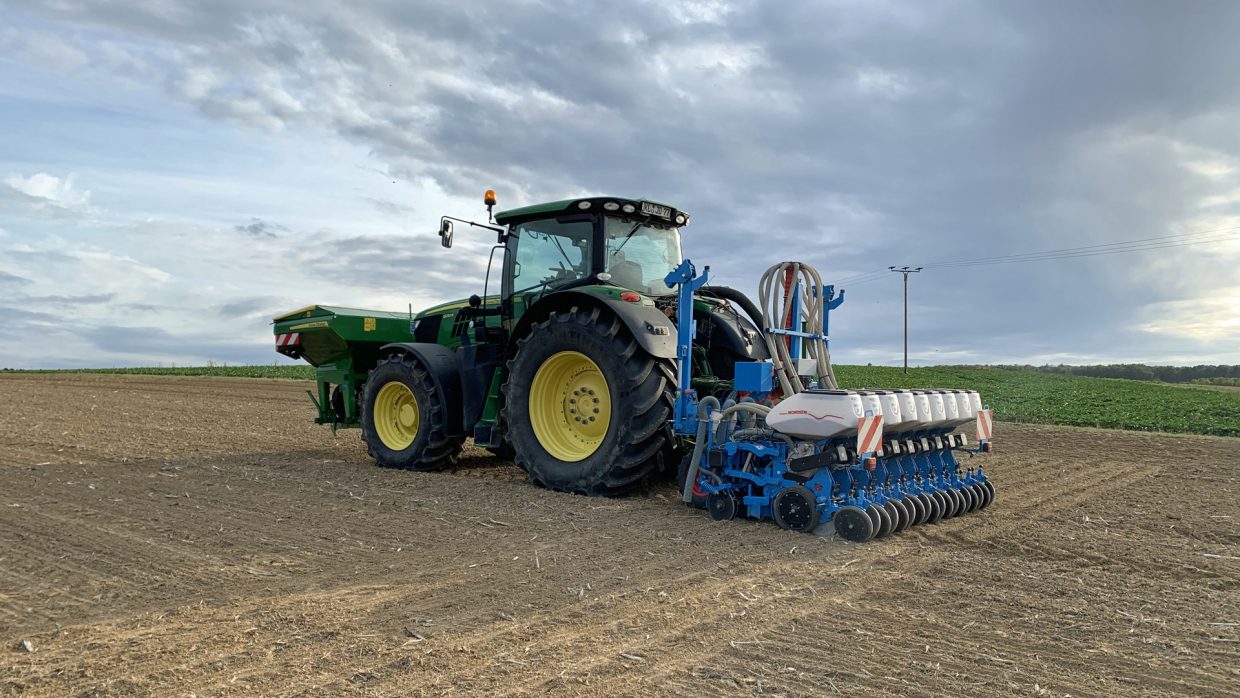As the Director of Small Grains Production Systems, Christoph Wigger works together with his team to better understand the needs of farmers and contractors around the world. The goal is to develop technical solutions that enable more economical and sustainable results in arable farming. Many machines and systems available on the market today offer considerable cost saving potential. And optimising the entire crop rotation offers an additional yield opportunity.
Since spring of last year, the prices for agricultural resources have increased considerably. So, how did customers react to this?
A recent customer survey has shown us that more than 20% have adjusted their cropping plans for 2023, because of higher input prices. Many customers are also reducing the use of mineral fertilisers, trying to replace them with organic fertilisers, and applying pesticides in a more targeted manner. In addition, more customers want to control weeds in their fields mechanically.
How can John Deere help farmers reduce their input costs?
Implements such as sprayers and precision seed drills are of great importance when it comes to reducing input costs. For these machines, we offer section control and single-seed drilling as well as individual spray nozzle control. We also develop AI systems that can recognise weeds themselves and combat them in a targeted manner.
Through a cooperation with xarvioTM from BASF, we try to leverage their experience in supporting the customer to decide on the right timing and most effective dosages when applying fungicides. The enabler is a better interface between xarvioTM and the John Deere Operations Center which automates the order submission from xarvioTM to our sprayers.

What about fertilisation?
More than half of the farmers who responded to our survey plan to reduce N-fertilisation per hectare, and almost 40% want to use more organic fertiliser. Site-specific fertiliser maps can be imported into or created in the John Deere Operations Center. Soil analyses, yield maps or information on the ingredients in the harvested crop (mainly protein content) serve as a base; these can now also be measured with the Harvest Lab Sensor for John Deere combines. Fertiliser management with section control or liquid manure tanks equipped with an NIR sensor, such as John Deere’s HarvestLab, allow for fertiliser application that is more precise and in line with the crop’s nutrient demand. As part of our sustainability goals, we are aiming for a 20% improvement in Nitrogen Use Efficiency (NUE).
Does the Operations Center offer tools to reduce costs?
The Operations Center is used to better plan the agricultural year as well as individual work steps. This allows for the optimised use of seeds, fertilisers and pesticides, while also improving logistics and use of machinery. As a result, the machines can be better utilised, thereby achieving additional fuel savings.

What about the acceptance of new technologies?
Guidance systems and automatic section control are widespread and used by many customers today. We know from our customer survey that the use of these systems will continue to increase. In addition, about one third of the people surveyed stated that they want to be supported by digital plant protection recommendations even more in the future.
“During the Covid pandemic, we have seen a significant acceleration in the adoption of telemetry systems. Dealers and customers, alike have recognised the benefits of connected machines. Smaller problems, such as improved machine settings, could be solved directly on site in the driver’s cab via remote diagnosis and settings. John Deere has established itself as a market leader in connected support, and dealers can help directly without having to drive out to the customer’s location.
Have all technical possibilities been maxed out already?
Features such as HarvestSmart on combine harvesters or the iTEC headland management on tractors offer enormous potential for automation and on top efficiency advantages for our customers. Unfortunately, we find that some of these features are not being activated. Therefore, many of our dealers offer training courses to prepare drivers for the next season.
Together with our engineers, we ensure that all new features are intuitive and easy to activate and operate.
Christoph Wigger
In addition, how-to videos on our website give customers the opportunity to familiarise themselves with the new technologies. To introduce the younger generation, in particular, to new technologies, we helped develop a precision farming module for the computer game, Farming Simulator. Together with our engineers, we ensure that all new features are intuitive and easy to activate and operate.
In which areas is John Deere investing in the medium- and long-term to further reduce the costs of agricultural production?
When planning our research and development activities, we are working more and more with model farms located in different countries that must cope with a variety of climatic conditions on different soils. Through this close cooperation with practical farms, we get a good overview of the entire production system as well as a wide range of developments, such as improved hybrid seeds or crop protection products.
We also learn to what extent margins can be increased can by using these new technologies. Our analyses have shown that the biggest efficiency increase potential for farmers lies in sowing, fertilising and crop protection. Based on our findings, we develop new technical solutions that offer customers high added value. We test these solutions directly on the model farms for their practical suitability. In addition, we look at how a change in one work step affects the other work steps. We take a holistic view of the entire crop production system.

In addition to site-specific farming, John Deere works a lot on the automation of machinery. What is the reason for this focus?
An important aspect of automation is that farmers can be as productive at the end of a long working day as they were in the first hour. In other words, we want to actively lighten their load. In addition, we see that it is becoming increasingly difficult for farmers and contractors to find suitable employees, while ever higher demands are being placed on the quality of work.
Automation offers new opportunities here by simplifying the operation of machines while nsuring a high quality of work. So far, we have automated individual work steps or tasks such as steering. Last year in the USA, we presented the first tractor that can till the soil fully autonomously. The development leads from partial to full automation. Our goal is to develop a fully autonomous farming system by 2030.
What are the retrofit bundles all about?
As part of our life-cycle solution strategy, we offer our customers retrofit packages that allow them to use the latest technological solutions even on their older machines. The customer can thus use the latest technical achievements on their farm without having to buy a completely new machine.
In addition, most of our customers own several John Deere machines, but not all of them necessarily have the same technical standard and therefore do not work optimally in interaction with the connected machines. In such cases, retrofit bundles offer the possibility of bringing the entire fleet to a uniform technical standard.


